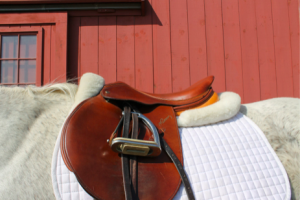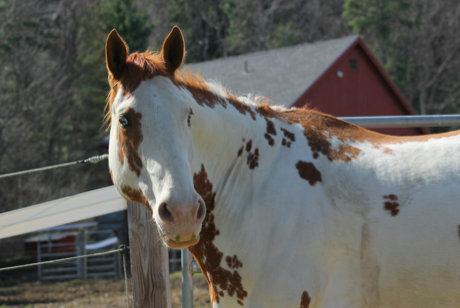By Paige Cerulli, Certified Equine Massage Therapist
Spring is finally here, and that means it’s time to get your horse back into training. Whether your horse has had the whole winter off or you’re focusing your training on getting ready for show season, it’s important to keep your horse’s health in mind as your training progresses. These tips can help you to keep your horse healthy during training so that you can have a long season of riding.
Consider Your Horse’s Current Condition
Before you begin any training program, you need to consider your horse’s physical condition. Has he had the last five or so months off from any activity at all? If so, then you’ll need to progress very slowly with him to help him get back into riding shape. If your horse has had regular exercise but hasn’t done any intense activity, like jumping or schooling upper-level movements, then you’ll be able to do a bit more with your horse, athletically.
Design a training program which accommodates your horse’s athletic condition. If your horse hasn’t been ridden, then the first few weeks of your program should consist of lots of walking with shorter trot sets. If your horse has been somewhat active, then focus on building muscle and endurance with longer trot sets, some cantering, and even some hill work. Regardless of your horse’s current condition, I highly recommend including a Posture Prep massage/grooming to warm up and relax your horse’s muscles pre and post ride.
Monitor Your Horse’s Water Intake
The spring can be a tricky time to introduce athletic activity to your horse. The weather fluctuates, your horse hasn’t completely lost his winter coat, and the change in his routine may interrupt his natural eating and drinking schedule. Because of this, it’s ultra-important to monitor your horse’s water intake and to make sure that he drinks enough for his increased activity level. Using a product such as Horse Quencher can encourage your horse to drink enough water, potentially avoiding issues like dehydration and impaction colic.
Check Saddle Fit

When your horse is out of shape, the muscles of his back change shape, altering the way that your saddle fits. While your saddle may have fit your horse well in the fall, it may no longer fit him in the spring. This change will likely be temporary, and as you work your horse he will regain the muscling of his topline. However, you will need to make some adjustments, such as using thicker pads or using a shimmable pad, in order to make sure that the saddle doesn’t cause your horse discomfort.
Enlist Equine Chiropractic and Massage Therapy
If you’ve ever tried to start up an exercise routine after taking a few months off, you know how sore and stiff your body can be. Using Posture Prep is an easy and convenient way to massage and groom your horse. It’s always a good idea to have an equine chiropractor out in the beginning of your spring training – the chiropractor can fix any misalignments that may have occurred during the winter, and can help to get your horse ready for training.
As mentioned, massage therapy is a valuable tool in helping to keep your horse healthy during spring training. Whether you hire a professional equine massage therapist or do some Posture Prep therapy on your horse yorse’s muscles, reducing the chance of him injuring himself while in training.
By taking these extra measures to help keep your horse healthy during springtime training, you can set your horse up for success all season long.

